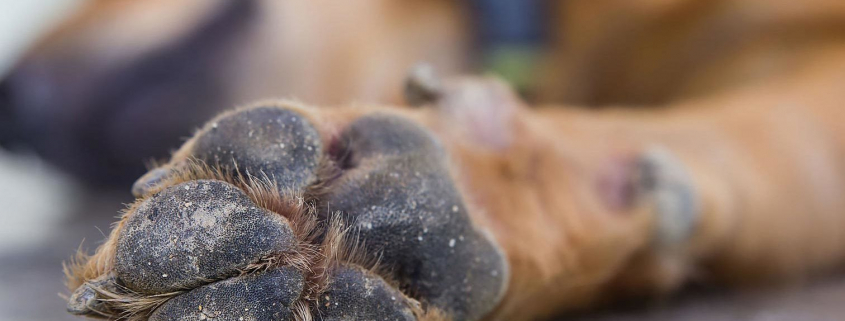Dog Hyperkeratosis
A dog’s skin health is essential as it will impact its overall health. Three layers make up your dog’s skin: epidermis, dermis, and subcutaneous. The epidermis is the outer layer composed of skin cells that create new layers of cells from the inside out. The combination of new and dead skin cells acts as a shield to keep fluid and nutrients inside your dog’s body while protecting it from infection.
Hyperkeratosis is a skin condition where the epidermis becomes very thick over time. Cells build up in the areas like your dog’s nose or footpads. Unfortunately, this can cause build-up in response to external pressure, which often results in calluses. Other disorders can lead to hyperkeratosis. The excess thickening of the skin becomes so hard that the skin can crack and bleed, which causes pain and secondary infections.
You may be wondering what causes hyperkeratosis. Multiple breeds may have an increased risk of developing hyperkeratosis lesions over their body. Certain diseases can increase the likelihood of hyperkeratosis. These include canine distemper and leishmaniasis. In addition, autoimmune disorders such as pemphigus and systemic lupus erythematosus can cause hyperkeratosis.
Most of the time, it is easy to identify hyperkeratosis in dogs. If you see any skin lesions on your dog, contact your veterinarian immediately. Your vet may perform skin impression testing on your dog. This testing involves pressing a slide into your dog’s skin. The slide is then stained and evaluated under a microscope. The benefit of this testing is that it can determine if a bacterial infection is present. Your vet may also prescribe topical medications to address the issue.
Hyperkeratosis can develop anywhere in your dog. However, it predominantly affects the nose and paw pads. Mild symptoms are easiest to manage, but you may need to consult your veterinarian for significant symptoms, especially if there is an underlying cause resulting in systematic illness.



